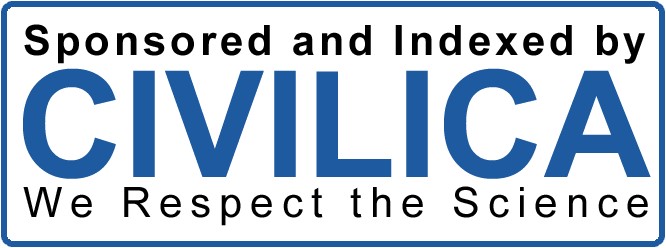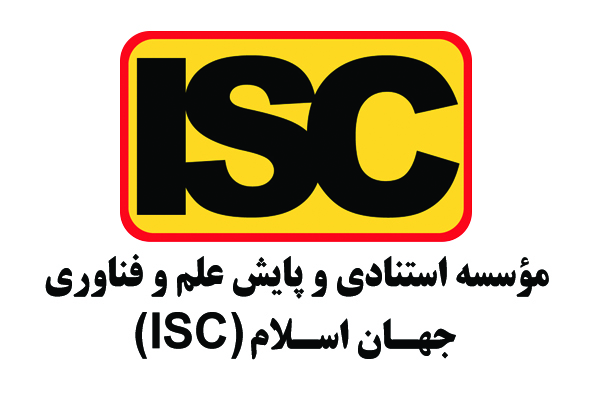بررسی اندازه گیری موفقیت ابتکارات مدیریت استراتژیک با استفاده از شاخص های کلیدی عملکرد
کلمات کلیدی:
اندازه گیری موفقیت, موفقیت ابتکارات, مدیریت استراتژیک, شاخص های کلیدی و عملکردچکیده
شاخص های کلیدی عملکرد به معنای توانایی هر مدیریتی برای پیش بینی تغییرات موجود در محیط کاری می باشد. چنین مدیریتی باید بتواند تغییرات محیطی را تشخیص داده و به آنها به عنوان عوامل رشد و شکوفایی بنگرد در دنیای کنونی که تغییرات به سرعت صورت می گیرد. بر این اساس، با وجود اینکه شاخص های کلیدی عملکرد نقش و اهمیت خاصی در مدیریت ها دارد، تا کنون تحقیقات و پژوهش های وسیعی در این زمینه صورت نگرفته است. لذا مسأله اساسی در این تحقیق بررسی رابطه بعضی از متغیرهای مدیریتی با شاخص های کلیدی عملکرد مدیریت می-باشد. با توجه به این مهم، محقق تصمیم گرفته رابطه بین برخی از متغیرهای مدیریتی- مانند هوش هیجانی ، هوش مدیریتی و مدیریت سرمایه های فکری را به عنوان متغیرهای پیش بین در متغییر ملاک[ شاخص های کلیدی عملکرد مدیریتی] در یک قاب بنام "بررسی رابطه بین ابتکارات مدیریت استراتژیک با شاخص های کلیدی عملکرد مدیریتی" بررسی نماید. تحقیق حاضر از نوع توصیفی همبستگی میباشد. جامعه آماری کلیه کارشناسان و مدیران میباشد که بالغ بر 210 نفر بودند. از این تعداد با استفاده روش نمونه گیری تصادفیطبقهای متناسب با حجم، تعداد 136 نفر انتخاب شدند و پرسشنامه های شاخص های کلیدی عملکرد مدیریتی، هوش هیجانی، هوش مدیریتی و مدیریت سرمایههای فکری برای بررسی ارتباط 18 فرضیه حاصل از متغیرها با شاخص های کلیدی عملکرد مدیریتی، در اختیار آنها قرار گرفت. دادهها گردآوری شد و با استفاده از روشهای آماری پیرسون، اسپیرمن و رگرسیون چندگانه مشاهده گردید که بین ابعاد این متغیرها با شاخص های کلیدی عملکرد مدیریتی رابطه معنی داری وجود دارد. همچنین مشاهده گردید خودمدیریتی با مقدار بتا [326/0]، کاربرد دانش با مقدار بتا [282/0]، اتحاد و توافق با مقدار بتا [268/0] و سرمایهی رابطهای با مقدار بتا [229/0] اثر مثبت بیشتری در مقایسه با سایر متغیرها در پیشگویی متغیر شاخص های کلیدی عملکرد دارند.
دانلودها
مراجع
Alblooki, K. A., & Arshad, R. (2024). Impact of Strategic Management Practices on the Financial Performance with
Moderation of Business Intelligence and the Government Intervention in the UAE SMEs. Boletin de Literatura Oral-The
Literary Journal, 11(1), 130-142. http://www.boletindeliteraturaoral.com/index.php/bdlo/article/view/851
Alsaid, L. A. Z. A., & Ambilichu, C. A. (2024). Performance measurement in urban development: unfolding a case of
sustainability KPIs reporting. Journal of Accounting in Emerging Economies, 14(1), 48-74. https://doi.org/10.1108/JAEE09-2021-0299
Bayanati, M. (2024). Examining Dimensions, Components, and Key Performance Indicators of Information Logistics in
Industry 4.0. In Information Logistics for Organizational Empowerment and Effective Supply Chain Management (pp. 27-
Carton, R. B., & Hofer, C. W. (2006). Measuring Organizational Performance: Metrics for Entrepreneurship and Strategic
Management Research. Edward Elgar Publishing. https://doi.org/10.4337/9781847202840
del‐Rey‐Chamorro, F. M., Roy, R., van Wegen, B., & Steele, A. (2003). A framework to create key performance indicators for
knowledge management solutions. Journal of Knowledge Management, 7(2), 46-62.
https://doi.org/10.1108/13673270310477289
Dhillon, S. K., Ibrahim, R., & Selamat, A. (2013). Strategy identification for sustainable key performance indicators delivery
process for scholarly publication and citation. Int. J. Inf. Technol. Manag, 3(3), 103-113.
Emon, M. M. H., Khan, T., & Siam, S. A. J. (2024). Quantifying the influence of supplier relationship management and supply
chain performance: an investigation of Bangladesh’s manufacturing and service sectors. Brazilian Journal of Operations
& Production Management, 21(2), 2015. https://doi.org/10.14488/BJOPM.2015.2024
Franceschini, F., Galetto, M., & Maisano, D. (2007). Management by measurement: Designing key indicators and performance
measurement systems. Springer Science & Business Media.
aletto,+M.,+%26+Maisano,+D.+(2007).+Management+by+measurement:+Designing+key+indicators+and+performance
+measurement+systems.+Springer+Science+%26+Business+Media.&ots=6_srGSu4pU&sig=qbtc7iyWZyYmX8MmQw
vf2CjCfy4
Gunduz, M., Naji Khalid, K., & Maki, O. (2024). Evaluating the Performance of Campus Facility Management through
Structural Equation Modeling Based on Key Performance Indicators. Journal of Management in Engineering, 40(1),
https://doi.org/10.1061/JMENEA.MEENG-5641
Hristov, I., & Chirico, A. (2019). The Role of Sustainability Key Performance Indicators (KPIs) in Implementing Sustainable
Strategies. Sustainability, 11(20), 5742. https://www.mdpi.com/2071-1050/11/20/5742
Hristov, I., & Chirico, A. (2023). The cultural dimension as a key value driver of the sustainable development at a strategic
level: an integrated five-dimensional approach. Environment, Development and Sustainability, 25(7), 7011-7028.
https://doi.org/10.1007/s10668-022-02345-z
Kamble, S. S., Gunasekaran, A., Ghadge, A., & Raut, R. (2020). A performance measurement system for industry 4.0 enabled
smart manufacturing system in SMMEs- A review and empirical investigation. International Journal of Production
Economics, 229, 107853. https://doi.org/10.1016/j.ijpe.2020.107853
McCullough, B. P., & Trail, G. T. (2023). Assessing key performance indicators of corporate social responsibility initiatives
in sport. European Sport Management Quarterly, 23(1), 82-103. https://doi.org/10.1080/16184742.2022.2033808
Parmenter, D. (2015). Key performance indicators: developing, implementing, and using winning KPIs. John Wiley & Sons.
https://books.google.com/books?hl=en&lr=lang_en&id=bKkxBwAAQBAJ&oi=fnd&pg=PA101&dq=Key+Performance
+Indicators:+Developing,+Implementing,+and+Using+Winning+KPIs&ots=c_U3mYf3fs&sig=5s9AD1s0c4VDr8TT1L
bsUgI8Y-Y
Radzi, A. R., Farouk, A. M., Romali, N. S., Farouk, M., Elgamal, M., & Rahman, R. A. (2024). Assessing Environmental
Management Plan Implementation in Water Supply Construction Projects: Key Performance Indicators. Sustainability,
(2), 600. https://www.mdpi.com/2071-1050/16/2/600
Susanto, P. C., Ali, H., Sawitri, N. N., & Widyastuti, T. (2023). Strategic Management: Concept, Implementation, and
Indicators of Success (Literature Review). Siber Journal of Advanced Multidisciplinary, 1(2), 44-54. https://research.esiber.org/SJAM/article/view/21
Wu, H.-Y. (2012). Constructing a strategy map for banking institutions with key performance indicators of the balanced
scorecard. Evaluation and Program Planning, 35(3), 303-320. https://doi.org/10.1016/j.evalprogplan.2011.11.009












